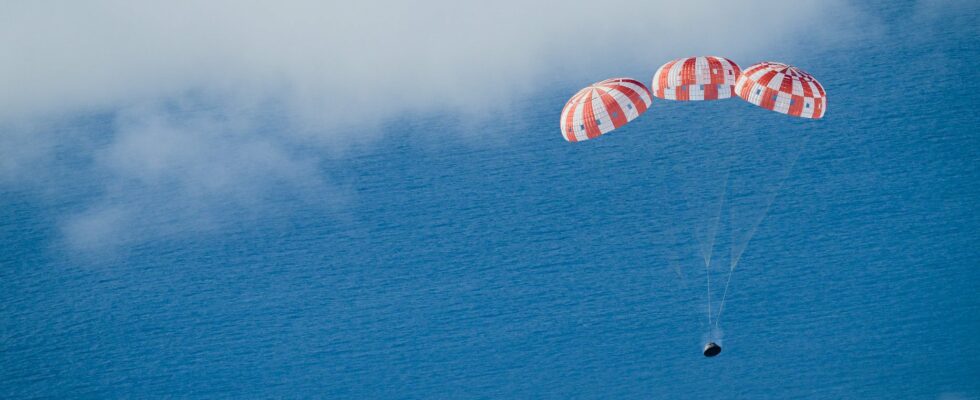Three months after the return of the Orion capsule of its journey around the Moon, the American agency pushes the throttle towards the mission Artemis II with crew. The study of the data shows that everything (almost) went as planned… NASA is confident to send the next one before the end of 2024!
And soon, it will announce some novelties.
No room for error
2.25 million kilometers traveled, 161 tests carried out, 155 GB of raw data to analyze… We would almost forget it, but the Artemis I mission around the Moon was indeed a full-scale test for future manned exploration missions of The NASA. It’s been three months since the Orion capsule and its three dummies landed off the coast of California (less than 4 km from the center of the planned area), and since then the teams have made good progress. On the one hand, after repatriating Orion to Florida, they opened the capsule and transferred part of its flight equipment to the test room: once validated, it went directly back to Orion, but this time to the second capsules! Antennas, screens, GPS receiver, avionics and inertial measurement device will therefore be reused. On the other hand, the examination of all the sensor data has delivered its conclusions, even if everything is not yet finished: all the major stages of the flight have been a superb success.
The is impeccab’ the capsule’
NASA is taking advantage of this experience to evaluate its systems, but also to prepare for the upcoming Artemis II mission, whose launch date has nevertheless been postponed to the end of November 2024, at least for the moment. But the work is going well. The mobile launch tower, for example, which was more damaged than expected (protective panels, cables, sealed doors destroyed) is currently being worked on for modifications, as well as some additions for future crew access. It should also reach the launch site before the end of the summer for emergency evacuation tests (giant zip line). The rocket behaved as expected, the capsule too… Even if NASA notes that the thermal material covering Orion’s shield did not react exactly as the simulations predicted. No danger for future equipment, but variations on the tiles in ablative coating, which burns slowly before tearing off while isolating the layers below.
The US agency also notes the excellent performance of the European service module ESM, which consumed 25% less energy than expected while producing 20% more electricity thanks to its large solar panels serving the Orion capsule. .
Long-term work
Full steam, therefore, towards Artemis II. NASA wants to take advantage of these good results and the good press of the Artemis program to obtain a budget increase (in reality, to follow inflation) for 2024, and is sparing no effort. Next big step on April 3, with the announcement with great fanfare of the first crew to leave around the Moon, more than half a century after Apollo. The SLS rocket is also progressing: the central stage is currently receiving its engines and will leave the production site for Florida at the end of the summer, final assembly will begin at the end of 2023. The road to the Moon is long , and there are still many uncertainties, especially for future missions that will target the surface. But for Artemis II, the horizon is clear!
Source : Nasa

1